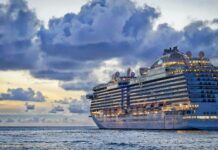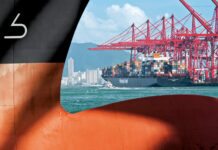
According to OceanScore, Asian vessel owners operating ships to and from Europe are anticipated to encounter emissions liabilities exceeding approximately €1 billion (US$1.1 billion) once the EU Emissions Trading System (EU ETS) is fully enforced.
According to the statement, the highest burden is expected to fall on companies registered in China and Singapore. Hamburg-based maritime technology firm OceanScore has projected that Asian-based Document of Compliance (DoC) holders will need to hand over between 15-16 million EU Allowances (EUAs), or carbon credits, for voyages to and from the European Union, accountable for 50% of emissions. Additionally, port calls and transits within the EU will be liable for 100% of emissions.
The estimated EU ETS costs for Asian owners are approximately €500 million (US$540 million) this year, with liabilities for 40% of emissions, increasing to 70% in 2025 and reaching 100% in 2026 during the three-year phase-in period of the regulation. It is anticipated that around 4,000 Asian-flagged vessels will be affected by the EU ETS, comprising approximately one-third of the total 12,500 cargo and passenger ships above 5000gt currently subject to the EU ETS.
Furthermore, these vessels are owned or operated by 400 DoC holders, including major players such as China’s COSCO, Anglo-Eastern Ship Management based in Hong Kong, and South Korea’s HMM, with about half of the affected vessels operated by non-EU DoC holders.
Also, the estimated €1 billion (US$1.1 billion) cost for Asian shipping is contingent upon the fluctuating carbon price, which currently stands at around €55 (US$60) per tonne of CO2. This price is determined by the supply and demand for EUAs.
“A total of nearly 80 million EUAs will have to be surrendered by the shipping industry once the EU ETS is fully phased in, of which 40% will come from non-EU companies, also including the UK, Norway and Turkey,” stated Albrecht Grell, co-managing director of OceanScore.
According to OceanScore’s forecast, Chinese and Hong Kong-based entities are expected to surrender approximately 5.5 million EUAs, while Singaporean players may surrender 5.4 million. Additional contributions are expected from Japan (1.6 million), South Korea (1.2 million), and India (1.1 million). When considering other Asian countries like Thailand and Malaysia, the total number of EUAs required rises to 20 million.
In terms of individual company cost exposure, OceanScore’s analysis reveals that a company operating 15 vessels would need to surrender just over 300,000 EUAs, amounting to a cost of approximately US$18 million based on the current carbon price.
Moreover, voyages to and from Europe contribute approximately 59% of emissions subject to the EU ETS, while 41% stem from voyages and port activities within Europe. Despite this, voyages to and from Europe will bear a lesser cost burden compared to domestic European traffic, mainly due to the 50% liability factor.





